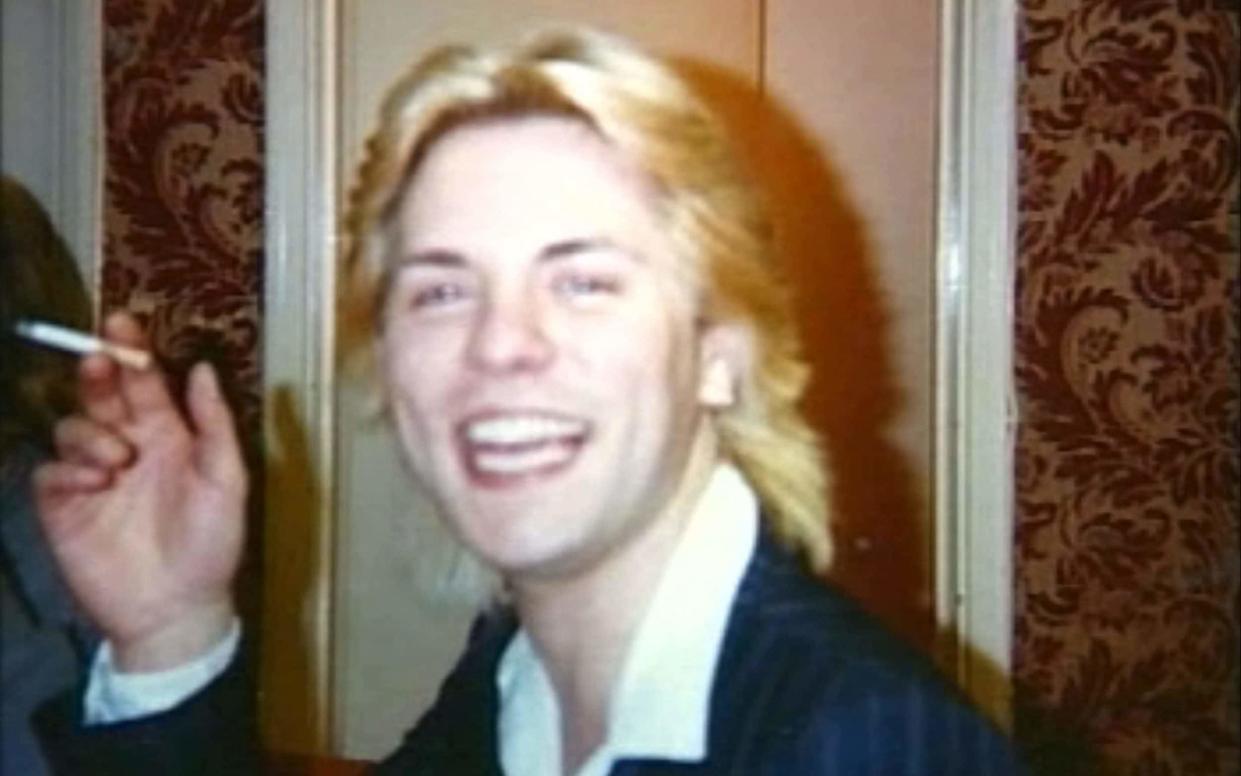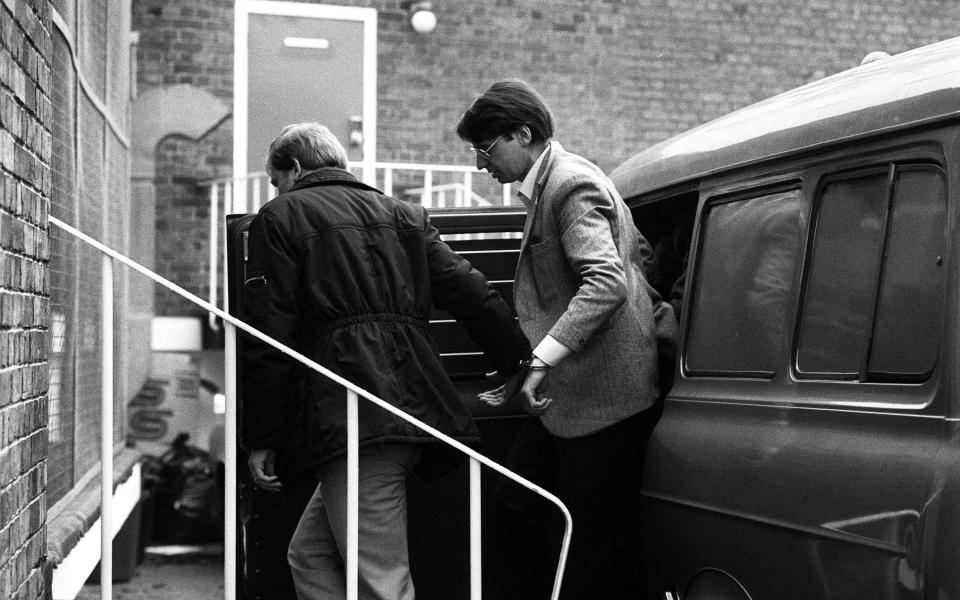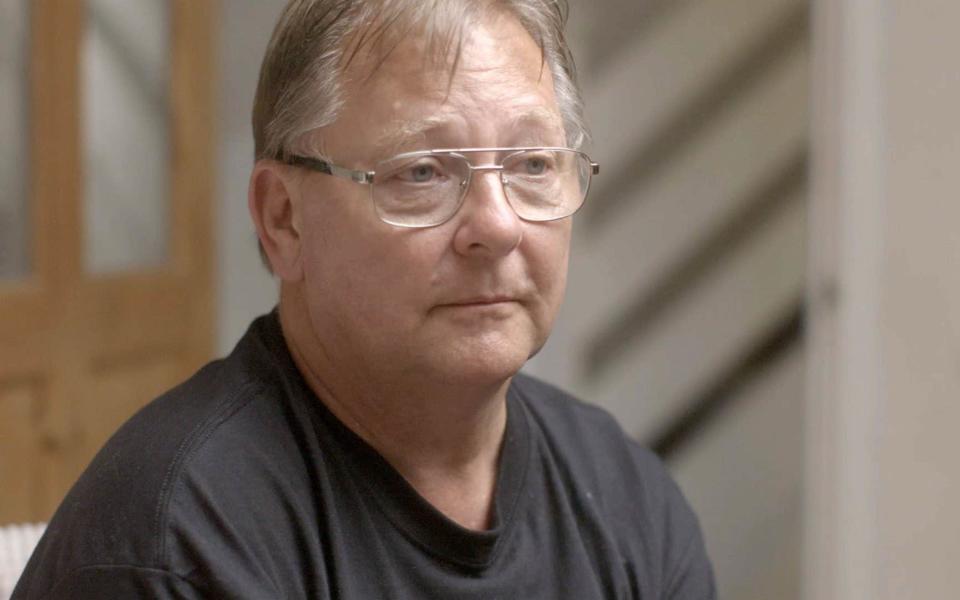My brother escaped Dennis Nilsen but he still destroyed his life

It was in the spring of 1982 that 21-year-old Carl Stottor met the man who would destroy his life. Stottor had travelled to London from Blackpool a few months earlier, trying to forge a career as a drag artist. Like many young gay men of that era, he gravitated to the capital as a place of acceptance. Once there, he drank and partied amid the bright lights of Soho’s gay pubs and bars.
One night in May, Stottor was in Camden’s Black Cap pub when a floppy-haired, rather austere-looking man walked over and offered him a drink. His name was Dennis Nilsen. When the pub closed, Nilsen invited Stottor back to his flat, a few miles away in Muswell Hill. They didn’t sleep together; the pair simply chatted until Stottor fell asleep. Stottor woke in the early hours, and realised with panic that Nilsen was trying to strangle him using the zip from his sleeping bag. He lost consciousness. When he woke up, Nilsen was holding his head under water in a bathtub. It’s unclear exactly what happened after that, but Nilsen at some point appears to have lost interest in murdering him. He let Stottor go, even walking him to the local Tube station.
It wasn’t until a few years later that Stottor realised just how narrowly he’d escaped death. By that night in May 1982, Nilsen had already murdered 13 of the 15 young men he is thought to have killed between 1978 and 1983. He was Britain’s most prolific criminal, until Harold Shipman. It’s often said that Nilsen, a necrophile who worked at a job centre in Kentish Town, north London, preyed on vulnerable young men who lived at the margins of society. And there is some truth to that idea. Some of Nilsen’s victims were homeless; some had drug and addiction issues. But other victims came from loving families, with friends, jobs and connections. At the time of his encounter with Nilsen, Stottor was in the prime of his youth, with an exciting future ahead of him, full of thrilling theatrical performances and drag shows.

But the memories of that night left Stottor with deep psychological scars, remembers his younger sister, Julie Bentley. His trauma would echo down the generations, affecting the lives of his younger relatives in ways he could never have predicted at the time – and in ways that Stottor, a “funny, talented, clever” man, never would have chosen.
“He turned to alcohol to take away the pain, the guilt, the memories, the flashbacks,” says Julie, 48. She is speaking to me over the phone from her home in Hampshire. “I think he had PTSD. I’ve held him when he’s been crying, [unable] to get images out of his head.”
Julie appears in a new three-part documentary, The Nilsen Files, starting on BBC Two on Monday January 24. Most accounts of Nilsen’s crimes – including the fictionalised ITV drama Des, released in 2020 – tend to focus on the murderer himself. Biographers obsess over the grisly details: Nilsen’s flat of horrors, where police found a pair of human legs in the bathroom; the murderer’s tendency during police interviews to crack bizarre jokes at his interrogators’ expense.
These sort of ‘misery memoirs’ have come under fire by TV critics in recent years, accused of capitalising on the public’s morbid fascination with violence and death.
Instead, the new BBC film tries to shift focus away from Nilsen and onto the victims and survivors. It also catalogues alleged errors by the police, who failed to take early reports about Nilsen seriously, and failed to join the dots between missing victims, according to the film’s director, Michael Ogden. Had they arrested the civil servant sooner, lives might have been saved. In the climate of 1980s homophobia, he says, victims were written off as promiscuous gay men with unsavoury lifestyles. “Because they went home with a gay man, they almost became guilty,” Ogden says.
He thinks it’s hard not to see parallels with the case of Stephen Port, who murdered four gay men in Barking between 2014 and 2015, by giving them overdoses of the ‘date-rape’ drug GHB. Last month, an inquest jury ruled that failings by the Met Police contributed to the deaths of Port’s final three victims. Port’s crimes were depicted earlier this month in Four Lives, a BBC drama in which the serial killer was played by Stephen Merchant.

Some time after his escape from Nilsen in 1982, Stottor went to the police. It’s not clear exactly when this happened, but his claims were dismissed without investigation. Detectives probably thought it was a “lover’s tiff”, says Ogden.
Stottor told his family about what had happened in Nilsen’s house, but he wasn’t always believed. “He used to phone up at 2, 3am, going on about how someone had tried to kill him,” remembers Stottor’s younger brother, Paul. “He was drunk out of his head. We just brushed it off and hung up the phone. We thought he was making up stories.”
It was not until February 1983 that Nilsen was finally arrested, when a neighbour spotted what looked like human remains in a drain outside his house. As he was driven away in a police car, Nilsen, speaking in a calm, confident manner, took it upon himself to confess, bragging that he had killed “15 or 16 since 1978” (though only seven were identified).
In an interview, he told police how he had allowed one man to escape. He gave intricate details, describing how he strangled the man and then held his head under his bathtub, allowing his dog to lick him. Those details chimed precisely with Stottor’s claims, according to Detective Sergeant Chris Healey, who worked on the investigation.
Police shared the news with Stottor. Finally, his family realised he hadn’t been lying. “My mum sat and cried, because she didn’t believe it originally,” remembers Bentley.
Stottor gave evidence at Nilsen’s trial at the Old Bailey, one of three survivors to do so. His voice quivered with emotion as he recounted the strangulation, the bathtub, how he pleaded for his life to be spared. Nilsen was found guilty and sentenced to life in prison with a minimum of 25 years, which was increased in 1994 to a whole-life tariff. He died from complications following stomach surgery in 2018, aged 72.

After the trial, Stottor tried to move on with his life, embracing his 20s as a young, confident gay man. Bentley was a teenager at this point, living with her mother in Buckinghamshire. She idolised her cool, adventurous older brother. When visiting home, Stottor would dress her as Madonna, plastering her face in make-up. When she was about 18, she travelled with her friends to Blackpool to watch his residency as a drag queen performer. “He was absolutely amazing,” she recalls.
He continued working as a drag performer for much of his life. But beneath his confident surface, memories of Nilsen were always there. “If he started having a few drinks, he would then start crying and it would flash back in to him. As the years went by he became an alcoholic, because he started relying on alcohol to dull the pain. Once every couple of months he would ring us up and talk about what happened. He was Jekyll and Hyde; there’d be crying and shouting. He would tell Mum he loved her, then say: ‘You’re the worst mother in the world.’”
It drove him apart from his family. When Bentley had her own children, she stopped answering Stottor’s calls. “I didn’t want to put my children through those two, three o’clock phone calls.”
In his later years he lived in Brighton as a drag performer. He died alone in his flat in 2013 of complications related to ketoacidosis (a diabetic coma). He was dead for a week before his body was found. Bentley received the bad news in a call from the police – on her birthday. “I broke down. Guilt came into it because he was on his own,” she says.
Tragically, the echoes of Nilsen’s crimes did not stop there. Four years ago, Bentley’s eldest son took his own life, aged 19, after suffering from depression. “In his letter he said he didn’t want to do to me what Uncle Carl did to Nanny. He didn’t want to be a burden on me.” Trauma “trickles down”, she says. “Carl never got support to combat it. It’s like a pebble in a pond – those ripples reach out.”
Bentley is grateful that Stottor’s story is now being told in Ogden’s BBC film. It’s the first time an account of Nilsen’s crimes will focus on the victims, she thinks, rather than on the grisly crimes of the perpetrator. Now, Bentley tries not to think about Nilsen. She thinks instead about her brother’s dancing, his uproarious sense of humour, his incredible capacity for fun.
“I focus on the happy things,” she says. “If I speak about Carl, I smile.”
The Nilsen Files is on BBC Two at 9pm on Monday January 24

 Yahoo News
Yahoo News 
